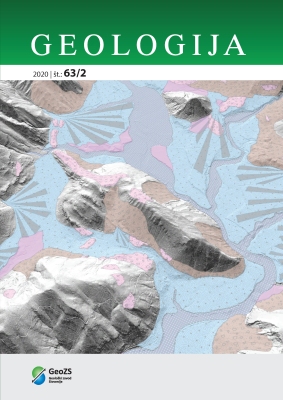Tracer test on the Dragonja landfill
DOI:
https://doi.org/10.5474/geologija.2020.016Abstract
The paper presents the results of a tracer experiment with the uranine tracer at the non-hazardous landfill of Dragonja. The purpose of the tracer test was to determine the dynamics of the potential pollutants from the landfill to the groundwater. The landfill lies on the thicker weathered layer of flysch rock that forms the slope of the hill. At the foot of the hill are silty clay and partly sandy alluvial sediments of the Dragonja River. The transport of uranine depends on the intensity and duration of precipitation, potential evapotranspiration, permeability, precipitation infiltration into the landfill, and saturation of the weathering layer of flysh. Uranine first appeared in the observation well P2, which is located downstream of the injection point, in the direction of water flow. Observation well P1 is not in the direction of direct flow and therefore only the edge of the dispersed tracer plume appeared in P1. The groundwater from the flysch weathered layer drains into the alluvial plain and the uranine concentrations are diluted in the groundwater. In the observation well P5 a slow increase and decrease of the uranium concentration was therefore observed. Due to the high evapotranspiration, the groundwater levels were falling until October, when they began to rise after autumnal precipitation events. The tracer experiment confirmed the heterogeneity and complexity of the geological structure of the landfill site.Downloads
How to Cite
Čenčur Curk, B. (2020). Tracer test on the Dragonja landfill. Geologija, 63(2), 193–201. https://doi.org/10.5474/geologija.2020.016
Issue
Section
Articles

